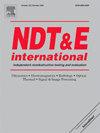利用基于mg的L-PBF组件的深度注意学习异常检测(DAL-AD)革新无损检测4.0
IF 4.5
2区 材料科学
Q1 MATERIALS SCIENCE, CHARACTERIZATION & TESTING
引用次数: 0
摘要
由于材料的反应性,在打印时检测3d打印镁合金中的异常是困难的。与无损检测(NDT) 4.0的原则一致,该原则强调对先进制造过程和全自动系统的检查,本工作提出了一种用于增材制造零件异常检测的新方法。采用选择性激光熔化法(SLM)以不同的扫描速率打印出3个mg基合金立方体,并采用x射线计算机断层扫描(XCT)扫描生成3个样品的图像切片。从所有三个样本中选择新的数据来从印刷部分中分割异常。这项工作采用了一种创新的方法,即在模型中添加显著性地图,以分割不同的3D打印体积。将注意层纳入U-net算法中,通过强调与显著性图有关的特定区域,增强了模型的学习特性。研究发现,与简单的U-net和其他迁移学习方法作为主干相比,在模型中使用注意层可以提高异常分割的准确性。所提出的具有显著连接的方法分别实现了98.29%的Dice相似系数(DSC)和96.67%的Intersection over union (IOU),证明了其在无损检测4.0背景下对增材制造部件检测的有效性。进一步将拟议的DAL-AD(深度注意学习异常检测)框架与工业5.0和ISO 9000等更广泛的工业领域结合起来,这项工作使人工智能辅助的、可持续的、原位的增材制造质量控制成为可能。本文章由计算机程序翻译,如有差异,请以英文原文为准。
Revolutionizing NDT 4.0 with Deep Attention Learning for Anomaly Detection (DAL-AD) in Mg-based L-PBF components
Detection of anomalies in 3D-printed magnesium alloy while printing is difficult because of the reactive nature of the material. In alignment with the principles of Non-Destructive Testing (NDT) 4.0, which emphasizes the inspection of advanced manufacturing processes and fully automated systems, this work presents a novel approach for anomaly detection in additively manufactured parts. Three Mg-based alloy cubes were printed through Selective Laser Melting (SLM) at different scan rates, and X-ray Computed Tomography (XCT) scan was employed to generate the image slices of all three samples. The novel data from all three samples has been selected to segment the anomaly from the printed part. The work has incorporated an innovative approach of adding a saliency map to the model for segmenting the different 3D printed volumes. Incorporating attention layers into the U-net algorithm enhances the learning characteristics of the model by emphasizing the specific region concerning the saliency map. It was found that by using an attention layer in the model, the accuracy in the segmentation of anomalies has been increased compared to simple U-net and other transfer learning approaches as a backbone. The proposed methodology with salient connection has achieved the Dice similarity coefficient (DSC) and Intersection over union (IOU) of 98.29% and 96.67% respectively, demonstrating its effectiveness in the context of NDT 4.0 for the inspection of additively manufactured components. Further aligning the proposed DAL-AD (Deep Attention Learning for Anomaly Detection) framework with broader industrial segments such as Industry 5.0 and ISO 9000, this work enables AI-assisted, sustainable, and in-situ quality control in additive manufacturing.
求助全文
通过发布文献求助,成功后即可免费获取论文全文。
去求助
来源期刊

Ndt & E International
工程技术-材料科学:表征与测试
CiteScore
7.20
自引率
9.50%
发文量
121
审稿时长
55 days
期刊介绍:
NDT&E international publishes peer-reviewed results of original research and development in all categories of the fields of nondestructive testing and evaluation including ultrasonics, electromagnetics, radiography, optical and thermal methods. In addition to traditional NDE topics, the emerging technology area of inspection of civil structures and materials is also emphasized. The journal publishes original papers on research and development of new inspection techniques and methods, as well as on novel and innovative applications of established methods. Papers on NDE sensors and their applications both for inspection and process control, as well as papers describing novel NDE systems for structural health monitoring and their performance in industrial settings are also considered. Other regular features include international news, new equipment and a calendar of forthcoming worldwide meetings. This journal is listed in Current Contents.
 求助内容:
求助内容: 应助结果提醒方式:
应助结果提醒方式:


